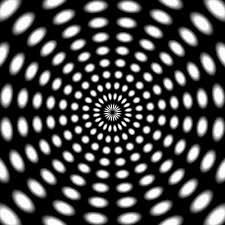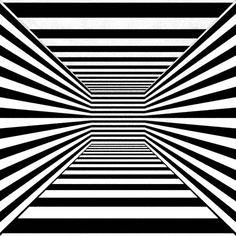|
LITR 4368 Literature of the Future |
Sample answers
for Essay 1:
|
 |
Andrea Gerlach
14 May 2019
Connection: Artificial or
Otherwise
Since the beginning, mankind has been
driven by the desire to be connected. To the Earth, to the cosmos, to each
other. The Greeks created a religion out of the bright burning lights in the
sky. Twentieth century scientists have convinced most of the western world that
every man came from one bit of protoplasm and that they were, at one time,
full-fledged monkeys. These ideas came from man just wanting to connect or be
connected with something. All narratives, including Speculative Fiction, consist
of man trying to rectify broken connections or manifest new ones. Two future
scenarios that manifest this narrative quite organically are high tech and low
tech. High tech is characterized by sophistication, limitless information,
artifice, and the cybersphere. Low tech is characterized by primitives, laws of
nature, the actual, and the family unit. In three stories, “Drapes and Folds”,
“The Logical Legend of Heliopause and Cyberfiddle”, and “The Onion and I”, high
tech and low tech are very prominent themes. I will compare and contrast the two
in how they deal with the human desire for connection concerning
dissatisfaction, the family unit, and attachment to inanimate objects.
Due to the fact that high tech tries to
imitate reality, people often tire of the virtual world. Our bodies, like our
eyes, physically tire of the blue light, and the overstimulation, but it is
really the mind that grows dissatisfied with cyberspace or even a step back:
industry. Which is odd because technology was supposed to make our lives better
by making them easier and less temporal. However, people still find themselves
needing to step away from their screens and their gadgets and turn toward things
more tactile, tangible. In some sort of dissatisfaction with their tapped in
virtual lives, people still bait a line and go fishing. They still knit afghans
and tend their gardens. And, it isn’t that they do these things in tandem with
their virtual living. These activities and experiences are an escape from
virtual living. There is something in the hands-on task of rowing a boat or
flipping a page that people crave. They are drawn to things that require of
them, sometimes as much as blood, sweat, and tears. In “Heliopause and
Cyberfiddle”, Pryer recalls a time when he was a child in school and he asked
his teacher, “Why is what we do better than what the Ancients did?” His teacher
proposes that everything is on a “progression from the concrete to the abstract,
from the material to the ethereal” (165). She doesn’t, however, explain why the
ethereal or the abstract is better than the material or the concrete. She
suggests that in the material world, “bureaucraty, ponderation, and the
introspectic” are not given their proper attention. The body and the mind, to
her, exist on separate planes. In order to address the mind fully, one must give
up on the body and the primitive tools it uses. The full expansion of the mind
seems to be her answer. Yet, Pryer’s fascination with the manual for how to
build a Stradivari Violin proves Pryer doesn’t agree. He sees value in this
primitive compile of information and the wooden instrument it claims to know
about. Pryer is dissatisfied from the moment we open onto him trying to breech
the heliopause. He has found the boundary line for man’s outside exploration, so
now he needs to busy himself with things that can be used right where he is at.
The violin is the perfect type of low tech to reveal to him what Carmen
Memoranda is lacking: soul connection.
Dissatisfaction takes the form of
disillusionment in “The Onion and I”. The family is part of a movement to give
up all material possessions for virtual ones; their car, their dog, and even
their house has been scanned into their cyberspace. Nothing can deteriorate.
Nothing can run out. This is the very big, very real, problem. The son cannot
properly mediate between the ‘real’ world and the virtual one. His mother is
most at home in VR, while his father is still attached to the Earth,
specifically its cycles of growth, represented in his obsession with the onion.
The son begins to crumble beneath the question of whether he himself is real or
not. But, when the father brings him to the onion, he says, “Should you try to
remove the layers, you would destroy the life that waits inside here…” (21). In
the ‘real’ world, things go to waste. Utility diminishes. This is what gives
natural things their value; their proclivity to dwindle. Concepts and
abstractions, synthetics and derivatives do not, as easily, dwindle. That which
is “outside the mind…needs care” (15). The son had been disillusioned to the
natural things that dissipate and exhaust until he tasted that onion. The taste
of that onion, no matter how hard they tried, could not be captured by ones and
zeros. Nuance and specificity are for the natural world. Virtual reality
performs a measly imitation of these things.
In “Drapes and Folds”, a high-tech
dystopia, the destruction of the family unit is evident. As Pearl explains, the
Powers in charge of the society want to do away with ‘archaic individualism’.
Procreation and the family are detrimental to an individualistic outlook on the
world. “The urge to procreate, to see some part of yourself continue, to pass on
your hopes and dreams”, this is an elevation of the individual and their legacy.
With the objective of decreasing elitism, the family unit must be obstructed.
What makes one more likely to believe themselves better than others than someone
who has parents who raised them and/or siblings that share their blood. Also,
having family or intimate relationships increases one’s capacity for compassion,
and compassion is the culprit of illogical decisions. Allowing people to exist
in a unit of others who look like them, think like them, and act like them is a
danger to high-tech. In this story we see how Pearl’s granddaughter, a humanoid,
dispels her logic-based programming to hide fabric for her grandmother. Her
maternal bonds outweighed her own rationale. This restoration of the family unit
is what makes this high-tech dystopian setting such a low-tech scenario.
Artifice is being rebelled against. Pearl and her granddaughter hold on to the
past and each other.
In all three of these stories, we have
characters finding themselves inexplicably drawn to inanimate objects, creating
meaning and fostering memories. Pearl connects fabric to warmth and affection
because of her grandmothers eclectic clothing (130). Pryer develops an intimacy
with his violin as he carves the wood and sweats over it. To Pryer, it’s as if
the violin is breathing, like he has brought it to life. With his first well
played tune on the strings, he feels his soul. The father from “The Onion and I”
stares at his onions on the shelf so long they become a permanence on their
shelf. He takes his helmet off regularly to go outside and remember his onion
farm. These are not phenomena. Man has fostered affections toward inanimate
objects for as long as he has been on this planet. The cause has been speculated
about, however, thinking of it in terms of high-tech and low-tech, maybe we can
make sense of it. Maybe man is so absolutely in need of connection and fears the
loss of it that he makes small connections to everything around him, including,
but not limited to, food, instruments, clothing, appliances, and trinkets. So,
returning to primitives while there are high-tech options is about nostalgia,
which is really the feeling of loss for the past.


